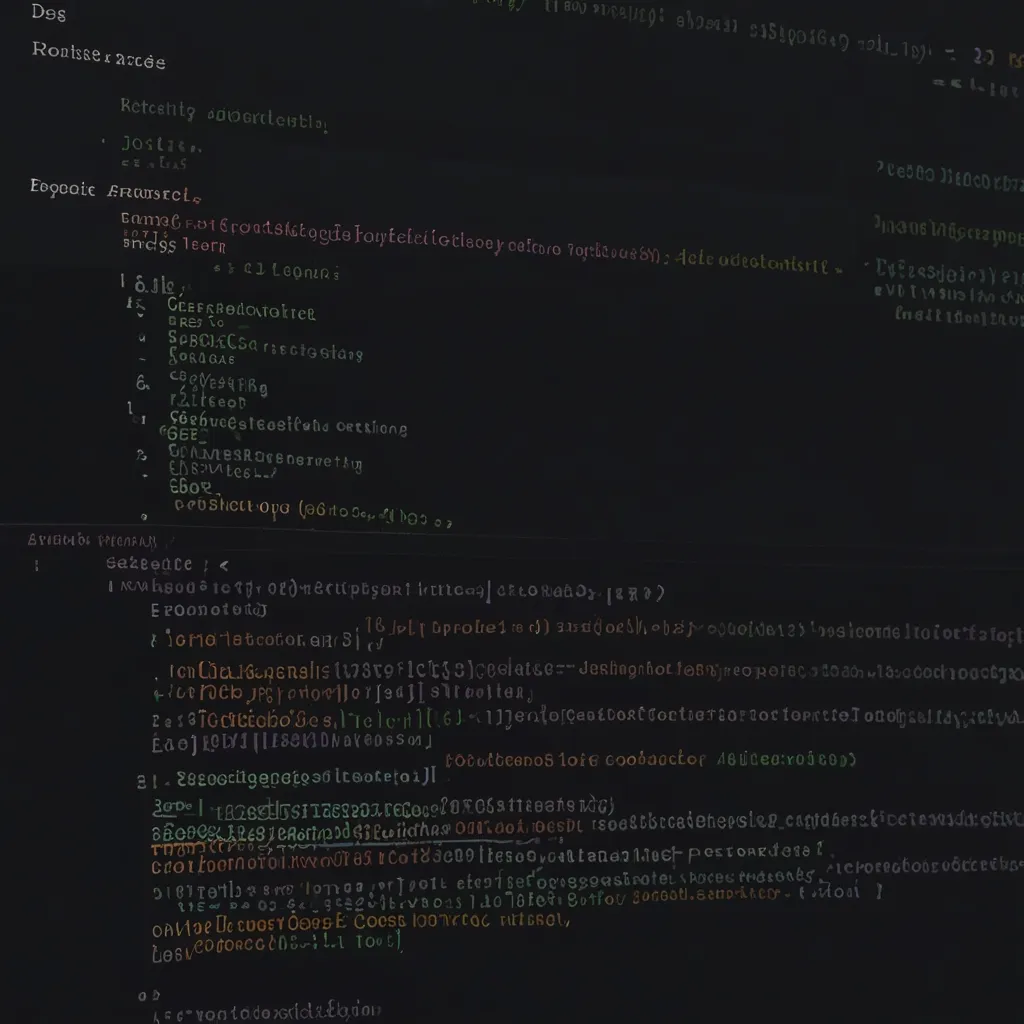Legacy code often represents a significant investment of time and resources, yet eventually becomes a barrier to progress as technology advances. Throughout my career, I’ve witnessed countless organizations struggle with the growing pains of modernizing their codebases. The challenge is substantial: how do we transform outdated code into something that aligns with current best practices while ensuring business continuity?
Legacy systems typically work—that’s why they’ve survived—but they often rely on obsolete patterns, lack proper test coverage, and resist modification. The cost of maintaining these systems increases over time, while the pool of developers familiar with older technologies shrinks. This creates an urgent need for modernization that balances immediate business requirements with long-term technical health.
Understanding Your Legacy Codebase
Before making changes, it’s essential to understand what you’re working with. Legacy code isn’t simply “old code”—it’s code that delivers value but lacks the qualities we now consider essential for maintainability.
First, assess the codebase to identify key issues. Common problems include tight coupling, global state dependency, lack of abstraction, minimal documentation, and absence of automated tests. I recommend creating a “code health report” that highlights these issues and establishes a baseline.
Documentation may be scarce, so start by mapping system boundaries and responsibilities. Create diagrams showing component relationships and data flows. Interview stakeholders who understand the system’s history and business context—their knowledge is invaluable.
Establishing a Safety Net
Making changes to legacy code without proper safeguards is risky. Before refactoring, implement mechanisms to detect breakage.
Start by writing characterization tests that document the current behavior without judging its correctness. These tests serve as a safety net during refactoring:
// Original legacy method
public decimal CalculateDiscount(Order order)
{
if (order.CustomerType == "Premium" && order.TotalAmount > 1000)
return order.TotalAmount * 0.15m;
if (order.CustomerType == "Regular" && order.TotalAmount > 1000)
return order.TotalAmount * 0.1m;
if (order.TotalAmount > 500)
return order.TotalAmount * 0.05m;
return 0;
}
// Characterization test
[Test]
public void CalculateDiscount_PremiumCustomerOver1000_Returns15PercentDiscount()
{
var sut = new LegacyDiscountCalculator();
var order = new Order { CustomerType = "Premium", TotalAmount = 2000 };
var result = sut.CalculateDiscount(order);
Assert.AreEqual(300m, result); // 15% of 2000
}
For systems without clear entry points, consider adding logging temporarily to understand execution paths. Monitoring tools can help identify real-world usage patterns that should be preserved.
Incremental Migration Strategy
Avoid the “big bang” approach to modernization. Instead, use incremental strategies that allow for gradual improvement while maintaining functionality.
The Strangler Fig pattern provides a structured approach for incrementally replacing legacy systems. Just as the strangler fig plant slowly envelops its host tree, you build new functionality around the old system until it can be safely removed:
// Legacy payment processor
public class LegacyPaymentProcessor
{
public bool ProcessPayment(double amount, string accountNumber)
{
// Legacy implementation
return true; // Simplified for example
}
}
// Modern adapter using the Strangler pattern
public class PaymentProcessor : IPaymentProcessor
{
private readonly LegacyPaymentProcessor _legacyProcessor;
private readonly IFeatureFlag _featureFlags;
public PaymentProcessor(LegacyPaymentProcessor legacyProcessor, IFeatureFlag featureFlags)
{
_legacyProcessor = legacyProcessor;
_featureFlags = featureFlags;
}
public PaymentResult ProcessPayment(PaymentRequest request)
{
if (_featureFlags.IsEnabled("UseNewPaymentSystem"))
{
// New implementation
return ProcessWithModernSystem(request);
}
// Call legacy system through adapter
bool success = _legacyProcessor.ProcessPayment(request.Amount, request.AccountNumber);
return new PaymentResult { Successful = success };
}
private PaymentResult ProcessWithModernSystem(PaymentRequest request)
{
// Modern implementation
return new PaymentResult { Successful = true };
}
}
Feature flags allow you to toggle between old and new implementations, facilitating controlled rollouts and easy rollbacks if issues arise.
Another effective approach is the Branch by Abstraction pattern, which lets you create new implementations behind abstractions while keeping the original code functional:
// Step 1: Create abstraction
public interface IUserRepository
{
User GetById(int id);
void Save(User user);
}
// Step 2: Implement with legacy code
public class LegacyUserRepository : IUserRepository
{
public User GetById(int id)
{
// Legacy database access
return DatabaseHelper.GetUserById(id);
}
public void Save(User user)
{
// Legacy save operation
DatabaseHelper.SaveUser(user);
}
}
// Step 3: Create new implementation
public class ModernUserRepository : IUserRepository
{
private readonly IDbContext _dbContext;
public ModernUserRepository(IDbContext dbContext)
{
_dbContext = dbContext;
}
public User GetById(int id)
{
return _dbContext.Users.FirstOrDefault(u => u.Id == id);
}
public void Save(User user)
{
if (user.Id == 0)
_dbContext.Users.Add(user);
else
_dbContext.Entry(user).State = EntityState.Modified;
_dbContext.SaveChanges();
}
}
Applying Modern Design Patterns
Once you have a safety net in place, start refactoring toward modern design patterns. This makes the code more maintainable and prepares it for new features.
Replace procedural code with object-oriented principles. Identify coherent responsibilities and move them into dedicated classes:
// Legacy procedural approach
public static void processOrder(Order order) {
// Validate order
if (order.getItems().isEmpty()) {
throw new IllegalArgumentException("Order must have items");
}
// Calculate totals
double subtotal = 0;
for (OrderItem item : order.getItems()) {
subtotal += item.getPrice() * item.getQuantity();
}
double tax = subtotal * 0.08;
double total = subtotal + tax;
// Update database
Database.updateOrder(order.getId(), subtotal, tax, total);
// Send notification
EmailSender.sendOrderConfirmation(order.getCustomerEmail(), order.getId(), total);
}
// Modern approach with single responsibility principle
public class OrderProcessor {
private final OrderValidator validator;
private final PriceCalculator calculator;
private final OrderRepository repository;
private final NotificationService notificationService;
public OrderProcessor(
OrderValidator validator,
PriceCalculator calculator,
OrderRepository repository,
NotificationService notificationService) {
this.validator = validator;
this.calculator = calculator;
this.repository = repository;
this.notificationService = notificationService;
}
public void processOrder(Order order) {
validator.validate(order);
OrderPricing pricing = calculator.calculatePricing(order);
order.setPricing(pricing);
repository.save(order);
notificationService.sendOrderConfirmation(order);
}
}
Implement dependency injection to improve testability and flexibility. This pattern allows dependencies to be provided from outside, making components more reusable:
// Legacy approach with hard-coded dependencies
public class CustomerService
{
private readonly Database _database = new Database("connection_string");
public Customer GetCustomer(int id)
{
return _database.FetchCustomer(id);
}
}
// Modern approach with dependency injection
public class CustomerService
{
private readonly ICustomerRepository _repository;
public CustomerService(ICustomerRepository repository)
{
_repository = repository;
}
public Customer GetCustomer(int id)
{
return _repository.GetById(id);
}
}
Replace massive methods with smaller, focused functions following the Single Responsibility Principle. Extract reusable functionality into helper methods:
// Legacy approach with giant method
function generateReport(data, type) {
// 200 lines of code handling different report types,
// data processing, formatting, and output generation
}
// Modern approach with focused methods
function generateReport(data, type) {
const processedData = processData(data, type);
const reportContent = formatReport(processedData, type);
return outputReport(reportContent, type);
}
function processData(data, type) {
switch(type) {
case 'sales':
return processSalesData(data);
case 'inventory':
return processInventoryData(data);
// Other types
}
}
function formatReport(data, type) {
// Format-specific logic
}
function outputReport(content, type) {
// Output generation logic
}
Handling Database Modernization
Legacy database interactions often mix business logic with data access. Modern approaches separate these concerns and provide better abstraction.
Consider this transformation from direct SQL to an ORM:
// Legacy approach with direct SQL
public List<Customer> getActiveCustomers() {
List<Customer> customers = new ArrayList<>();
try (Connection conn = DriverManager.getConnection(DB_URL);
Statement stmt = conn.createStatement();
ResultSet rs = stmt.executeQuery("SELECT * FROM customers WHERE status = 'active'")) {
while (rs.next()) {
Customer customer = new Customer();
customer.setId(rs.getInt("id"));
customer.setName(rs.getString("name"));
customer.setEmail(rs.getString("email"));
customer.setStatus(rs.getString("status"));
customers.add(customer);
}
} catch (SQLException e) {
e.printStackTrace();
}
return customers;
}
// Modern approach with ORM
public List<Customer> getActiveCustomers() {
return entityManager
.createQuery("FROM Customer c WHERE c.status = :status", Customer.class)
.setParameter("status", CustomerStatus.ACTIVE)
.getResultList();
}
For complex database migrations, consider using the Repository pattern to abstract data access:
// Repository interface
public interface ICustomerRepository
{
Customer GetById(int id);
IEnumerable<Customer> GetActive();
void Save(Customer customer);
}
// Legacy implementation using direct ADO.NET
public class SqlCustomerRepository : ICustomerRepository
{
private readonly string _connectionString;
public SqlCustomerRepository(string connectionString)
{
_connectionString = connectionString;
}
public Customer GetById(int id)
{
// ADO.NET implementation
}
// Other methods
}
// Modern implementation using Entity Framework
public class EfCustomerRepository : ICustomerRepository
{
private readonly ApplicationDbContext _context;
public EfCustomerRepository(ApplicationDbContext context)
{
_context = context;
}
public Customer GetById(int id)
{
return _context.Customers.Find(id);
}
// Other methods
}
Modernizing Frontend Code
Legacy frontends often mix concerns and lack proper structure. Modern approaches separate concerns and use component-based architectures.
For web applications, consider this transition from jQuery to a modern framework:
// Legacy jQuery approach
$(document).ready(function() {
// Load data
$.ajax({
url: '/api/products',
success: function(data) {
// Render products
var productList = $('#product-list');
$.each(data, function(i, product) {
productList.append(
'<div class="product">' +
'<h3>' + product.name + '</h3>' +
'<p>$' + product.price + '</p>' +
'<button class="add-to-cart" data-id="' + product.id + '">Add to Cart</button>' +
'</div>'
);
});
// Set up event handlers
$('.add-to-cart').click(function() {
var productId = $(this).data('id');
addToCart(productId);
});
}
});
function addToCart(productId) {
$.post('/api/cart', { productId: productId }, function() {
alert('Product added to cart!');
});
}
});
// Modern React approach
function ProductList() {
const [products, setProducts] = useState([]);
useEffect(() => {
async function fetchProducts() {
const response = await fetch('/api/products');
const data = await response.json();
setProducts(data);
}
fetchProducts();
}, []);
const addToCart = async (productId) => {
await fetch('/api/cart', {
method: 'POST',
headers: { 'Content-Type': 'application/json' },
body: JSON.stringify({ productId })
});
toast.success('Product added to cart!');
};
return (
<div className="product-list">
{products.map(product => (
<ProductCard
key={product.id}
product={product}
onAddToCart={() => addToCart(product.id)}
/>
))}
</div>
);
}
function ProductCard({ product, onAddToCart }) {
return (
<div className="product">
<h3>{product.name}</h3>
<p>${product.price}</p>
<button onClick={onAddToCart}>Add to Cart</button>
</div>
);
}
Leveraging New Language Features
Modern language versions offer features that can significantly improve code clarity and maintainability. Update your code to use these features where appropriate.
For example, in C#, consider using newer language features:
// Legacy C# code
public List<Customer> GetPremiumCustomers(List<Customer> customers)
{
List<Customer> premiumCustomers = new List<Customer>();
foreach (Customer customer in customers)
{
if (customer.TotalSpent > 10000)
{
premiumCustomers.Add(customer);
}
}
return premiumCustomers;
}
// Modern C# with LINQ, expression-bodied members, and nullable reference types
public IEnumerable<Customer> GetPremiumCustomers(IEnumerable<Customer> customers) =>
customers?.Where(c => c.TotalSpent > 10000) ?? Enumerable.Empty<Customer>();
Similarly, in JavaScript, leverage modern syntax:
// Legacy JavaScript
function fetchUserData(userId, callback) {
var xhr = new XMLHttpRequest();
xhr.open('GET', '/api/users/' + userId);
xhr.onload = function() {
if (xhr.status === 200) {
try {
var userData = JSON.parse(xhr.responseText);
callback(null, userData);
} catch (e) {
callback(e);
}
} else {
callback(new Error('Request failed: ' + xhr.status));
}
};
xhr.onerror = function() {
callback(new Error('Network error'));
};
xhr.send();
}
// Modern JavaScript with async/await, fetch API, and destructuring
async function fetchUserData(userId) {
try {
const response = await fetch(`/api/users/${userId}`);
if (!response.ok) throw new Error(`Request failed: ${response.status}`);
return await response.json();
} catch (error) {
console.error('Failed to fetch user data:', error);
throw error;
}
}
// Usage with destructuring
async function displayUserProfile(userId) {
try {
const { name, email, role } = await fetchUserData(userId);
updateUI({ name, email, role });
} catch (error) {
showErrorMessage(error.message);
}
}
Measuring Success
Modernization efforts should be measurable. Establish metrics to track progress and demonstrate value:
- Code quality metrics: Cyclomatic complexity, method length, class coupling
- Test coverage: Percentage of code covered by automated tests
- Build and deployment metrics: Build time, deployment frequency, failure rate
- Business metrics: Feature delivery time, bug count, customer satisfaction
Use static analysis tools to track these metrics over time. Celebrate improvements and learn from setbacks.
Common Challenges and Solutions
Throughout my modernization projects, I’ve encountered several recurring challenges:
Incomplete business knowledge: Document domain knowledge as you learn it. Pair experienced team members with those new to the codebase.
Resistance to change: Demonstrate tangible benefits of modernization through pilot projects. Involve stakeholders early.
Balancing refactoring with new features: Set aside dedicated time for modernization work. Consider a “refactoring budget” for each sprint.
Risk management: Start with lower-risk areas. Use feature toggles to enable quick rollbacks. Implement progressive delivery.
Conclusion
Modernizing legacy code is a journey that requires patience, discipline, and a strategic approach. By understanding the current state, establishing a safety net, and incrementally improving the codebase, you can transform technical debt into a modern, maintainable system.
Remember that modernization is not just about adopting the latest technologies—it’s about improving code quality, enhancing developer productivity, and enabling your organization to respond quickly to changing business needs. With a thoughtful approach to legacy code conversion, you can preserve valuable business logic while embracing modern paradigms.
The most successful modernization efforts I’ve been part of treated code as a living system that evolves continuously, rather than something to be completely replaced. This perspective helps teams make sustainable progress while continuing to deliver business value.






